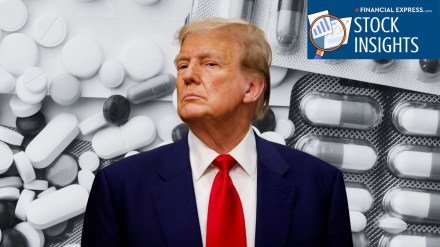Indian generic pharma exporter companies have, till now, escaped the Trump tariffs at a time when the US President has repeatedly highlighted that he is looking at medications imported from overseas and possible retaliatory steps.
Investors, who are looking at the increasingly attractive growth opportunities in the pharma sector over the next few years, are instead showing signs of turning to MNC pharma stocks, which have a strong focus on the rapidly expanding domestic market.
The Risks Hiding in the Domestic Market
The quarterly sales of MNC pharma companies operating in India are a small fraction of big Indian generic pharma exporters like Lupin, Cipla and Dr Reddy’s Laboratories, amongst others.
For instance, in the case of Lupin, its consolidated income from operations grew 11.8 % y-o-y to Rs 6,163.7 crore in the June 2025 quarter, while its net profit rose 51.7 % to Rs 1,221.4 crore in the quarter under review. The company’s sales in the US market were Rs 2,404 crore in the June 2025 quarter, a rise of 24.3 % y-o-y.
Meanwhile, GlaxoSmithKline Pharmaceuticals‘ consolidated revenue from operations was Rs 805 crore in the June 2025 quarter, broadly flat on a year-over-year basis. Its consolidated net profit was Rs 205 crore in the June 2025 quarter, a rise of 12.6 % on a year-over-year basis.
Apart from the threat of Trump tariffs, Indian generic pharma exporters are also subject to US FDA inspections at their factories and face retaliatory actions if not compliant.
In contrast, pharma MNC companies in their operations here are largely ‘domestic growth stories’ and with negligible sales in the US market. As a result, these MNC pharma companies do not have to deal with Trump’s tariff threats or high-level regulatory risk, especially from the US FDA, and are viewed by investors as ‘safer’ pharma stocks.
The Indian operations of pharma MNCs also often get access to their overseas parent’s blockbuster drug portfolio for sales in the local market, although it generally includes payment of royalties to the global head office. And, it helps to keep R&D costs in check for MNC pharma companies in India, in contrast to large Indian generic pharma exporters.
It’s no surprise that MNC pharma shares are becoming popular among investors on Dalal Street — Pfizer in early Tuesday’s trade was 1.25 % lower at Rs 5,688 and not too far from its 52-week high of Rs 6,452.9 that was reached on 2 September 2024. Similarly, GlaxoSmithkline Pharmaceuticals was 0.7 % lower in early Tuesday trade at Rs 2,770 and not too far from its 52-week high of Rs 3,516 that was reached on 5 June 2025.
And Abbott India was broadly flat at Rs 32,633 in early Tuesday vis-à-vis its 52-week high of Rs 35,921.6 that was reached on 3 July 2025.
Performance of MNC pharma companies in the June 2025 quarter
Abbott India’s revenues from operations were Rs 1,738.35 crore in the June 2025 quarter, a rise of 11.6 % y-o-y, while its net profit rose 11.3 % y-o-y to Rs 365.86 crore in the quarter under review. Abbott India has a presence in several segments, including anti-infectives and metabolic products. Meanwhile, Pfizer’s revenue from operations increased 7.3 % y-o-y to Rs 603 crore in the June 2025 quarter, while its net profit in the quarter grew 27.3% y-o-y to Rs 191.75 crore.
Is it Time to Add MNC Pharma to Your Watchlist?
Abbott India trades at a P/E of nearly 45 times estimated FY 26 earnings, while Pfizer trades at nearly 32 times estimated FY 26 earnings.
Meanwhile, Lupin trades at a P/E of 20 times estimated consolidated FY 26 earnings, while Dr Reddy’s Laboratories is at 18 times estimated consolidated FY 26 earnings.
Relative to their Indian counterparts, MNC pharma stocks are not cheap. But given how volatile the situation is, it may be good to add them to your watchlist to track for potential long-term opportunities.
